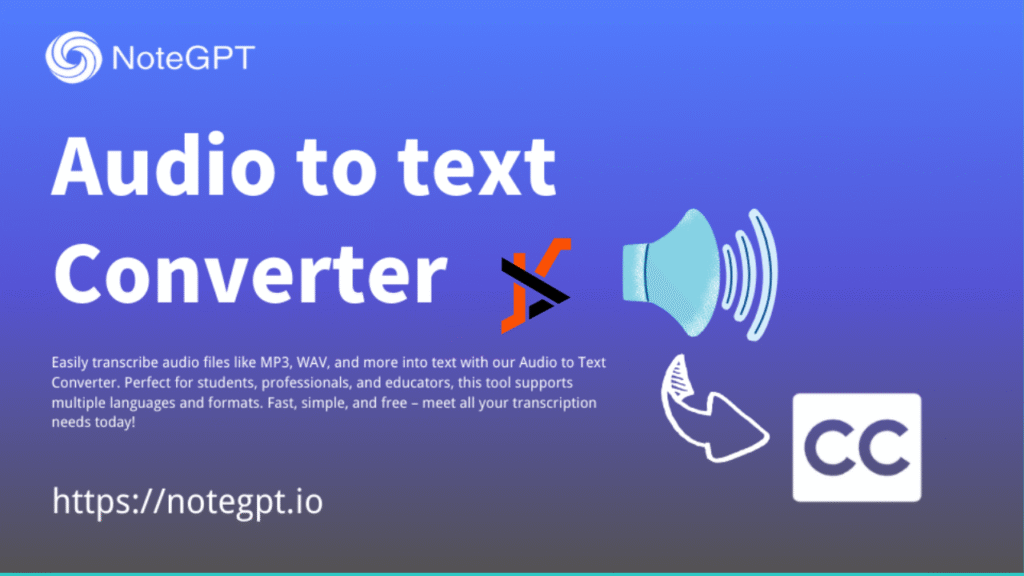In today’s fast-paced digital world, audio-to-text technology has become indispensable for professionals, students, and content creators alike. Whether you’re transcribing interviews, podcasts, meetings, or lectures, the right tool can save hours of work and boost productivity. As we step into 2025, advancements in artificial intelligence have revolutionized the accuracy, speed, and usability of audio transcription platforms. In this review, we explore the best AI audio to text converters of 2025, comparing their features, pricing, and ideal use cases.
1. Otter.ai – Best for Meetings and Collaboration
Otter.ai continues to lead the industry in real-time transcription services. With its smart integration into Zoom, Google Meet, and Microsoft Teams, it’s a top choice for professionals who need quick, reliable transcripts during virtual meetings.
Key Features:
- Real-time transcription with speaker identification
- Advanced search and keyword highlights
- Shared folders and team collaboration
- Mobile and desktop compatibility
Pros: Seamless collaboration, easy to use, generous free tier
Cons: Less accurate with heavy accents or poor audio quality
2. Descript – Ideal for Podcasters and Editors
Descript stands out not just as a audio transcription platform, but also as a full-fledged audio and video editing tool. Podcasters and content creators love Descript for its “Overdub” feature and intuitive interface.
Key Features:
- Automatic transcription with high accuracy
- Audio and video editing by editing text
- Screen recording and publishing tools
- Collaboration features for teams
Pros: Versatile platform for creators, intuitive interface
Cons: Paid plans are a bit pricey for casual users
3. Rev AI – Best for Professional-Grade Accuracy
Rev AI, backed by the renowned Rev.com transcription service, offers a high-performance AI audio to text converter that is perfect for journalists, researchers, and legal professionals who need top-tier accuracy.
Key Features:
- Speech-to-text API with 99% accuracy
- Speaker diarization
- Custom vocabulary and language models
- Fast turnaround for automated and human transcriptions
Pros: Extremely accurate, trusted by enterprises
Cons: Pay-per-minute model can get expensive
4. Trint – Great for Video Producers
Trint combines transcription with multimedia editing, making it a preferred choice for those working with video content. With its robust support for subtitles and captions, Trint simplifies post-production workflows.
Key Features:
- Multilingual support
- Interactive transcript editor
- Built-in subtitle generator
- Collaboration tools
Pros: Great for video projects, cloud-based platform
Cons: Subscription required for full functionality
5. Sonix – Multilingual and SEO-Friendly
Sonix is an advanced audio transcription platform that supports over 40 languages. It’s ideal for international businesses, marketers, and YouTubers aiming to optimize content for global reach and SEO.
Key Features:
- Multilingual transcription and translation
- Word-by-word time stamps
- Audio search and media library
- Export options for subtitles and captions
Pros: Excellent for global teams, supports many formats
Cons: Interface could be more modern
6. Temi – Budget-Friendly Option
If you’re looking for a low-cost, entry-level AI audio to text converter, Temi is a solid choice. While it doesn’t have all the bells and whistles of more premium tools, its speed and simplicity make it perfect for students and occasional users.
Key Features:
- Fast, automated transcriptions
- Simple editing interface
- Download in multiple formats
- Low per-minute cost
Pros: Budget-friendly, easy to use
Cons: Accuracy drops with complex audio or overlapping speech
7. Whisper by OpenAI – Most Advanced Open-Source Tool
OpenAI’s Whisper project is pushing boundaries in audio transcription through deep learning. While still mostly used by developers and researchers, its capabilities are unmatched for those with technical expertise.
Key Features:
- Supports multiple languages and accents
- Handles noisy audio with high accuracy
- Open-source for full customization
- No data limits if self-hosted
Pros: State-of-the-art AI, customizable
Cons: Requires technical setup, no official GUI
What to Look for in an Audio to Text Converter
When choosing the best tool for your needs, consider the following factors:
- Accuracy: How well does it handle different accents, background noise, and jargon?
- Speed: Is transcription delivered in real time or within minutes?
- Usability: Is the interface intuitive and beginner-friendly?
- Integrations: Does it work with your existing tools (Zoom, Teams, YouTube)?
- Cost: Does the pricing model fit your usage—occasional vs. heavy transcription?
- Security: Especially important for sensitive or confidential content.
Final Verdict
With AI-powered transcription tools evolving rapidly in 2025, there’s never been a better time to automate your audio workflows. Whether you’re a student, journalist, content creator, or business professional, there’s a perfect audio transcription platform out there for you. Tools like Otter.ai and Descript provide user-friendly solutions, while Rev AI and Whisper offer unmatched accuracy and flexibility for more demanding needs.
For the tech-savvy and budget-conscious alike, choosing the right AI audio to text converter can drastically improve productivity, reduce manual effort, and unlock new possibilities in content creation and accessibility.

